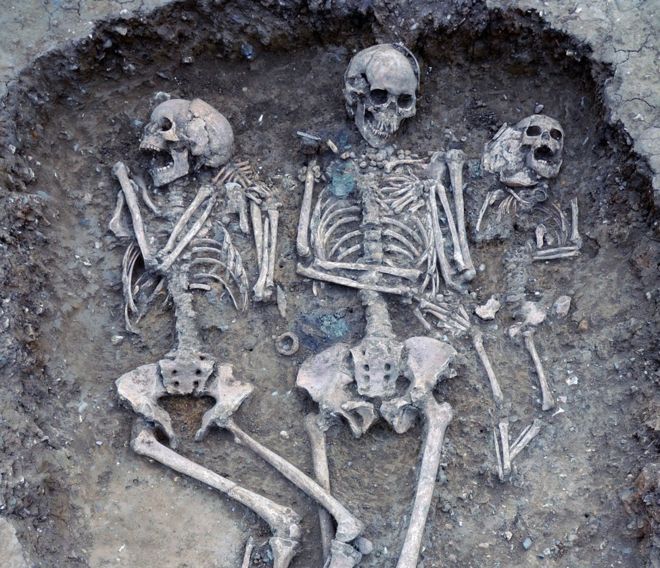This triple burial from Oakington, Cambridgeshire, includes metal and amber grave goods
The present-day English owe about a third of their ancestry to the Anglo-Saxons, according to a new study.
Scientists sequenced genomes from 10 skeletons unearthed in eastern England and dating from the Iron Age through to the Anglo-Saxon period.
Many of the Anglo-Saxon samples appeared closer to modern Dutch and Danish people than the Iron Age Britons did.
The results appear in Nature Communications journal.
According to historical accounts and archaeology, the Anglo-Saxons migrated to Britain from continental Europe from the 5th Century AD. They brought with them a new culture, social structure and language.
Read the rest of this article...



